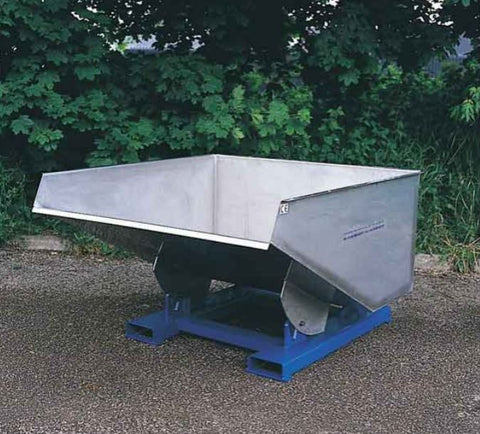Introduction
Forklift tipping skips are an indispensable tool in the material handling sector, offering a streamlined solution for managing waste and transporting materials. Their efficiency and versatility make them a go-to choice in various industries, from construction sites to manufacturing floors. However, their utility comes with responsibilities — ensuring safe and effective use is crucial. This blog provides essential tips for the safe and effective use of forklift tipping skips, aiming to enhance workplace safety and productivity.

Understanding Forklift Tipping Skips
Before diving into the safety tips, it's important to understand what forklift tipping skips are. These are large containers designed to be attached to forklifts, allowing for easy transportation and disposal of materials. They are particularly useful for handling bulk materials, debris, and waste, often seen in industrial and construction environments.
1. Proper Training and Certification
The foundation of safe operation begins with proper training. Operators should be certified in forklift use and have specific training in handling tipping skips. This training should cover the mechanics of the attachment, understanding load limits, and the nuances of manoeuvring with a skip in place.
2. Regular Maintenance and Inspections
Regular maintenance of both the forklift and the tipping skip is essential. Check for structural integrity, proper functioning of the release mechanism, and signs of wear or damage. Routine inspections can prevent accidents caused by equipment failure.
3. Understanding Load Capacity
One of the most common causes of forklift accidents is overloading. Always adhere to the recommended load capacity of the tipping skip. Overloading can lead to tipping, loss of control, and potential injuries.
4. Ensuring Stability and Balance
When loading the skip, distribute the weight evenly. An uneven load can cause the forklift to become unstable, increasing the risk of tipping. Always ensure that the load is secure before moving.
5. Safe Manoeuvring and Speed Control
Operators should be cautious when manoeuvring the forklift, especially when the skip is full. Slow down while turning and avoid sudden movements. Keeping a controlled, moderate speed is crucial for maintaining balance.
6. Clear Communication and Signage
In busy work environments, clear communication is key. Use signals and signage to inform others when the forklift is in operation. This practice enhances safety for both the operator and those around the forklift.
7. Using the Right Skip for the Job
There are various types of tipping skips, each designed for specific types of materials and loads. Selecting the right skip for the task at hand not only improves efficiency but also enhances safety.
8. Adhering to Workplace Safety Standards
Familiarize yourself with and adhere to the workplace safety standards and OSHA regulations. These guidelines are in place to ensure the safety of everyone in the work environment.

Conclusion
Forklift tipping skips are a valuable asset in many industrial settings, but their benefits come with the responsibility of safe operation. By following these essential tips, you can ensure the safety and efficiency of your workplace. Remember, a safe work environment is a productive and successful one. Stay informed, stay safe, and make the most of your forklift tipping skips.

